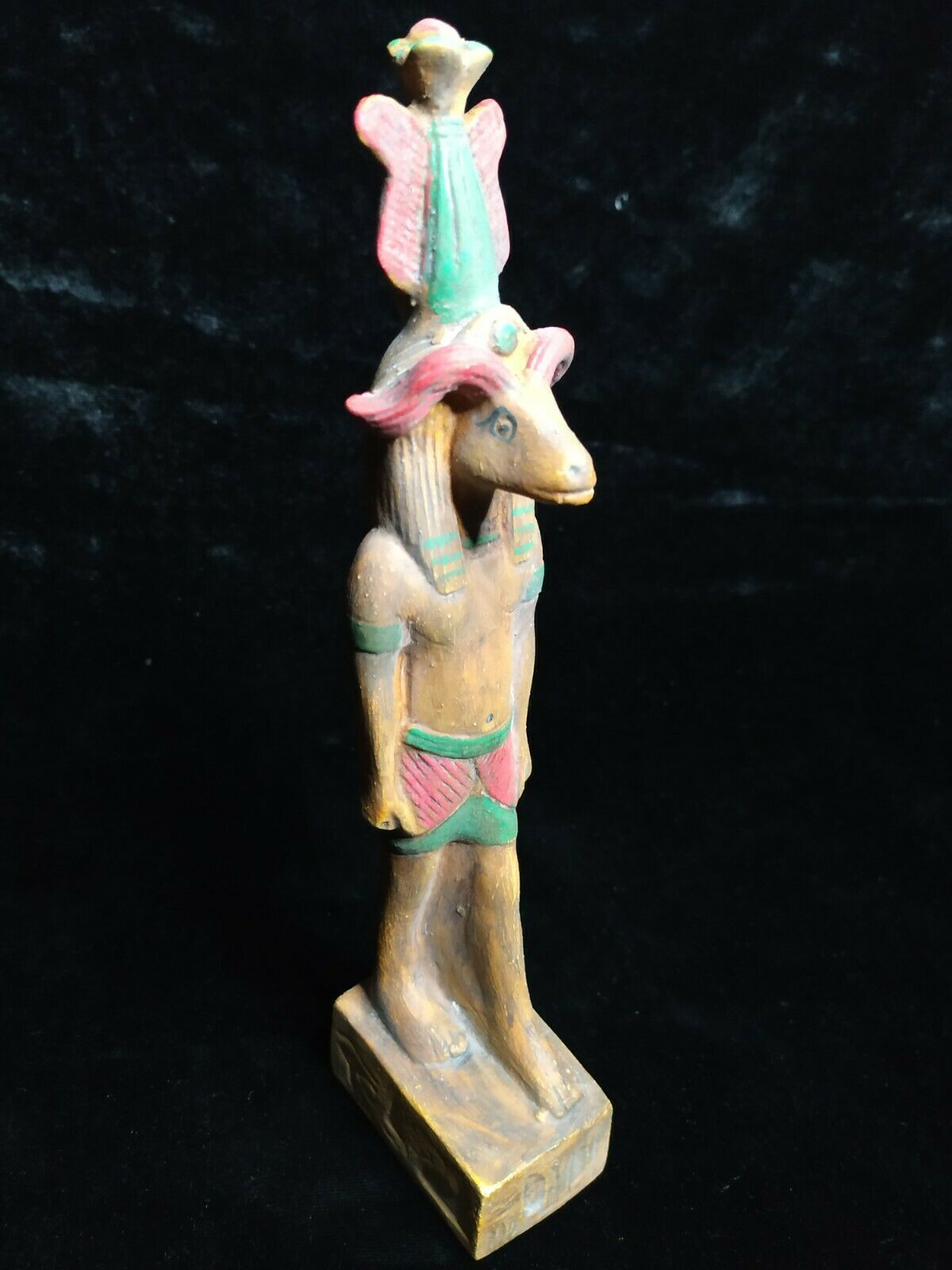-40%
Khnum, the holy ram, the ancient civilization of Egypt
$ 45.93
- Description
- Size Guide
Description
Undoubtedly, the issue of animal sanctification in ancient Egypt is one of the most controversial issues and the cause of wonder and astonishment for some, ancient and modern. The most prominent of them was the father of history or the father of lies, the most famous Greek historian Herodotus. Some scholars believed that the ancient Egyptians worshiped animals and made them specific deities with special symbols, and some strongly rejected this view.The sanctification of animals was known in Egypt since ancient times, and disappeared with time, but sanctification became a form of respect and as a tradition inherited from antiquity to historical times. However, the most important reason for the respect and sanctification of the animal in ancient Egypt and the motivation behind its worship is most likely due to the fact that the ancient Egyptian sanctified the sublime spirit inherent in the animal, not the animal itself, and did not sanctify all types of animals, as happens in India from the sanctification of all types of cows, but the choice falls on a specific type of animal. Not all animals were sanctified, including crocodiles, cows, rams, falcons, and others. Rather, the selection of the specific animal was made by a group of scientists in “Bar Ankh” or “House of Life,” the place of science and scientists found in temples in ancient Egypt. When the exact conditions required for that animal are met, the selection of that sacred animal is announced, and great celebrations are held in the temple of the god. When this sacred animal dies, it is embalmed and buried in a great procession.
The animal was a mediator between the ancient Egyptian man and the god who was symbolized by that type of animal. The ability of the deity was reflected in this animal symbol. And the matter turned into a kind of holiness that sanctified the spirit of the animal, not the animal itself. The spirit of the deity was manifested in that animal, this bird, or any of the reptiles. In this is what explains the elevation of God and his abstraction from the material state and his disappearance from view, and the transcendence of God and his elevation to a higher level of transcendence and transcendence from tangible materials to the immaterial heavenly world where transcendence in person to the kingdom of abstraction from all earthly attributes This respect came from reverence for the spirit of the deity found in the animal, not in the spirit of the animal. Domestic animals received a great deal of the kindness and care of the ancient Egyptians in the vicinity of the Egyptian family, as they represented good spirits in the vicinity of the family home.
Some tended to consider animal worship in ancient Egypt as alien to the ancient Egyptian society. Rather, it occurred in the eras of occupation and religious and political persecution, and in the later ages of ancient Egypt, especially in the Greco-Roman eras.
The sacred animals were depicted in bodies that were a masterful blend of animals and humans. We see them appearing in half-human bodies with a human body and an animal head. This was an attempt by the ancient Egyptians to bring the picture closer to mind. The name "spirits of deities" was given to these sacred deities. The ancient Egyptians gave new divine names to the animals chosen with great care to represent the deity, so we see the falcon called "Horus" and not "beck" in the sense of "falcon" his name in the ancient Egyptian language. The cow was called "Hathor", not "Ihat", and the crocodile was called the Lord "Sobek", not "scan", meaning in ancient Egypt. The ram now takes the name "Amon" or "Khnum", and not "Ba". The calf Apis, the spirit of the god Ptah, was depicted in a pure animal form. Why did the ancient Egyptians choose these animals? The ancient Egyptian took from the cow its ability to be tender to its newborn, and from the ram its ability to fertility and procreation, and from the falcon after it and its height in the sky, which made these animals divine spirits that lie within their deities.
The animal was sanctified out of dread and the desire to avoid its evil, benefit from it, and benefit from its good. Chance played its role in choosing the animal because of a characteristic that distinguishes it from the rest of its genus, or perhaps because it is related to the animal's dwelling, which might have what would benefit people. The choice of the animal was a renewal of the powers of the gods. God has many forms. Among them was the representation of the deity in the form of a pure animal or a human animal.
In the end, I say that the ancient Egyptians did not sanctify or worship the animal for its own sake, but they found in the animal a supreme divine power represented in the Spirit of the Lord who symbolized it. This was the great thinking of the ancient Egyptians. They expressed their refined thought through a large number of philosophical ideas in a way that brings their high-end ideas closer to the minds of simple people. However, when the Greeks visited Egypt, they did not realize the philosophy of belief and worship of the ancient Egyptian. It was rumored that the ancient Egyptian had worshiped an animal that did not exist in their beliefs. With time, the veil disappeared and the world knew the magic and mystery of animal sanctification in ancient Egypt, which taught the whole world.















